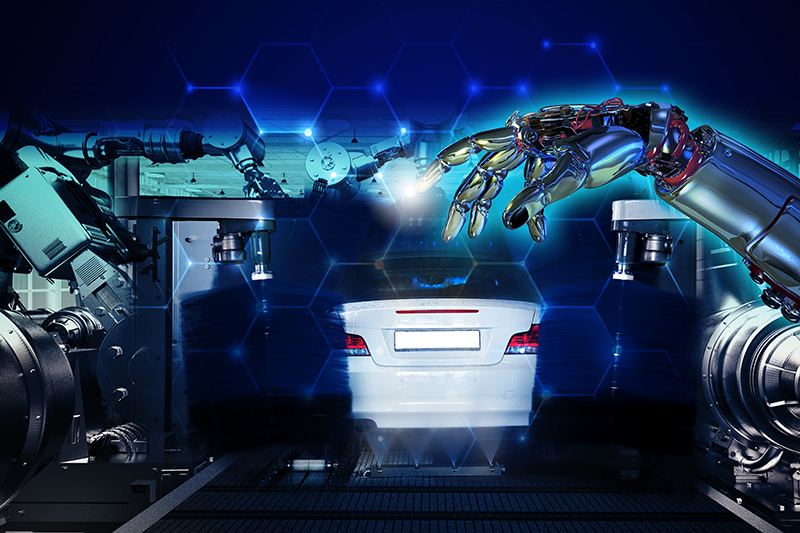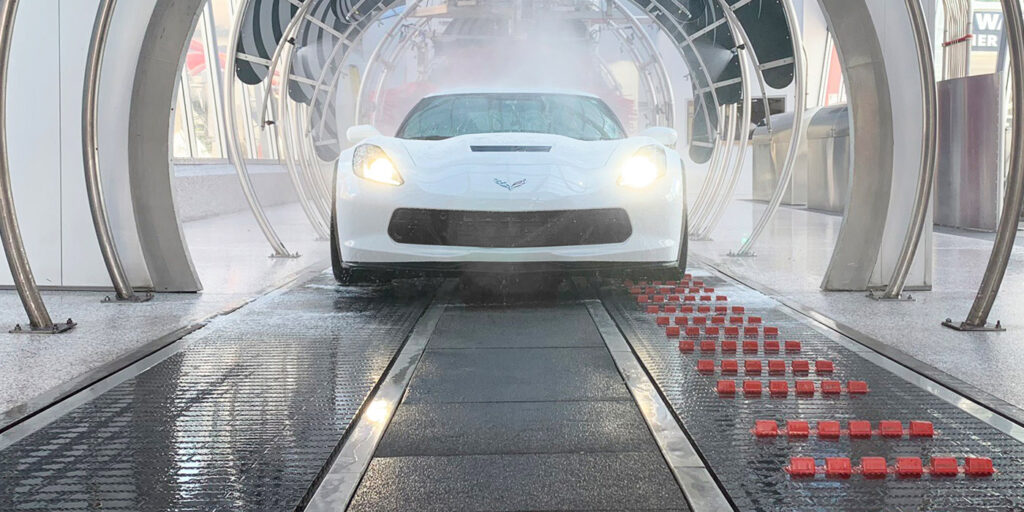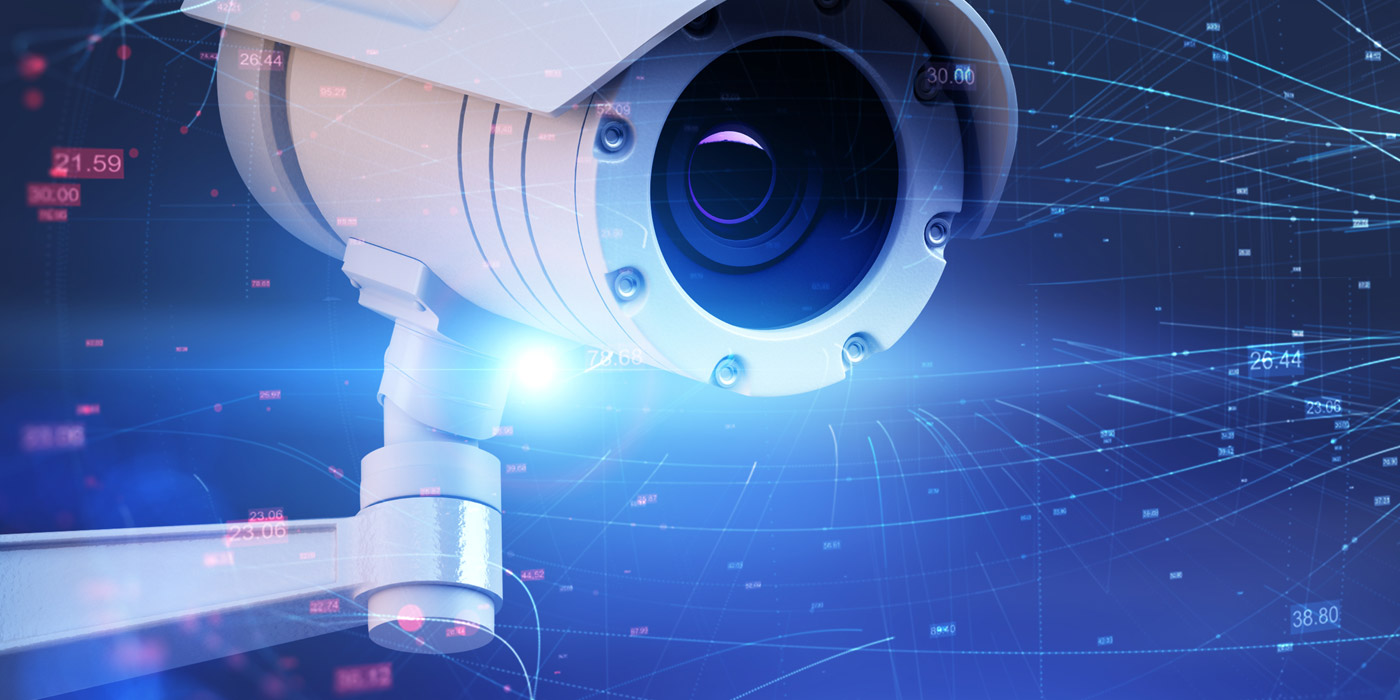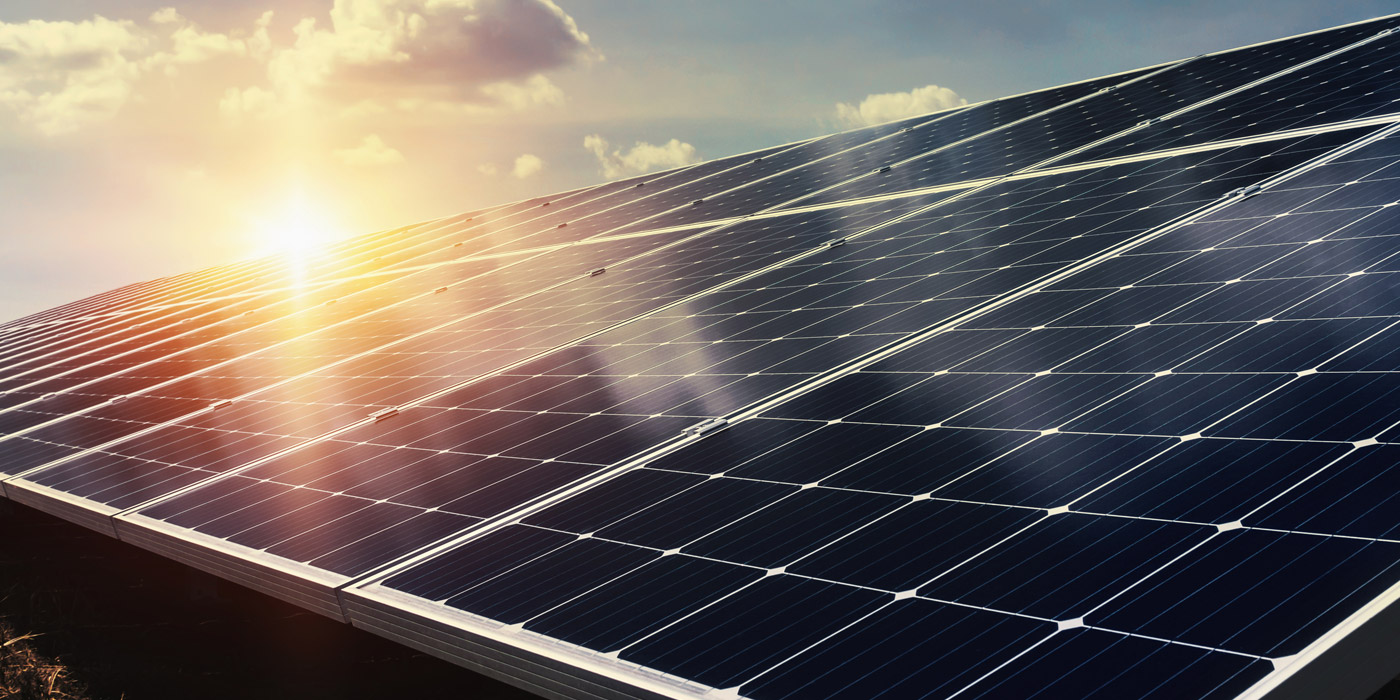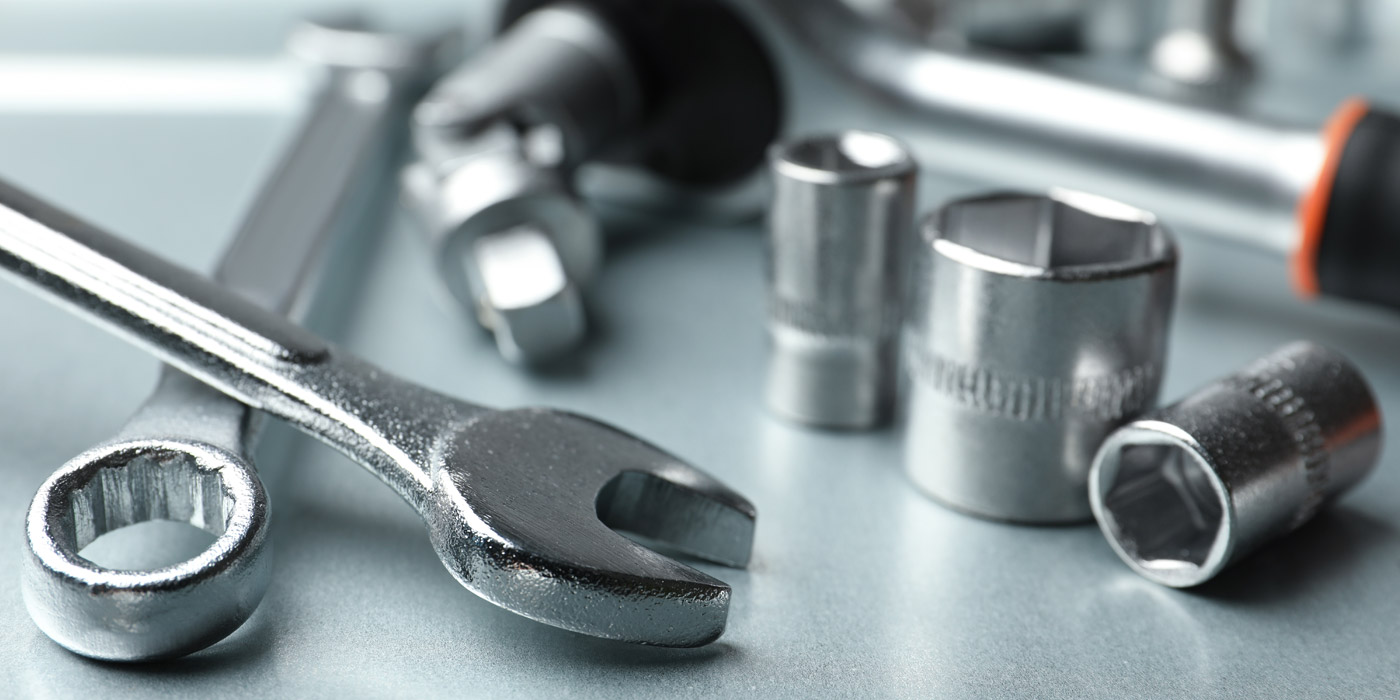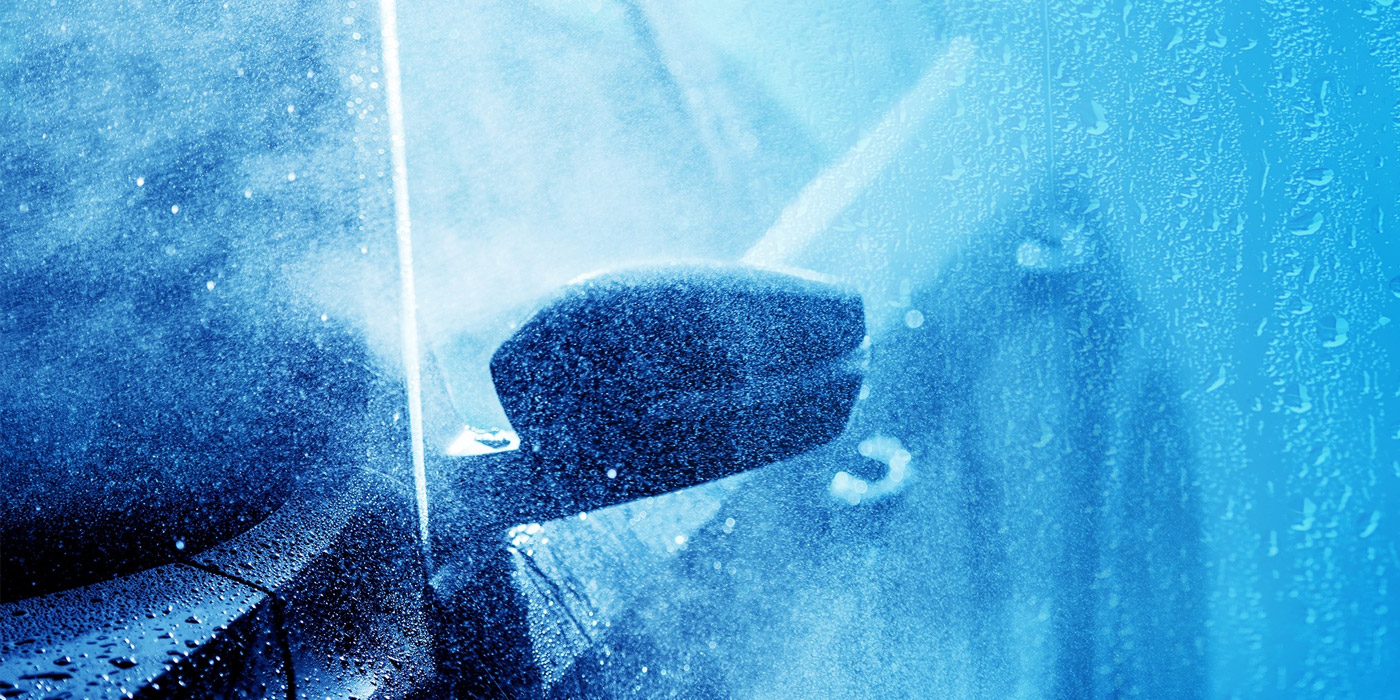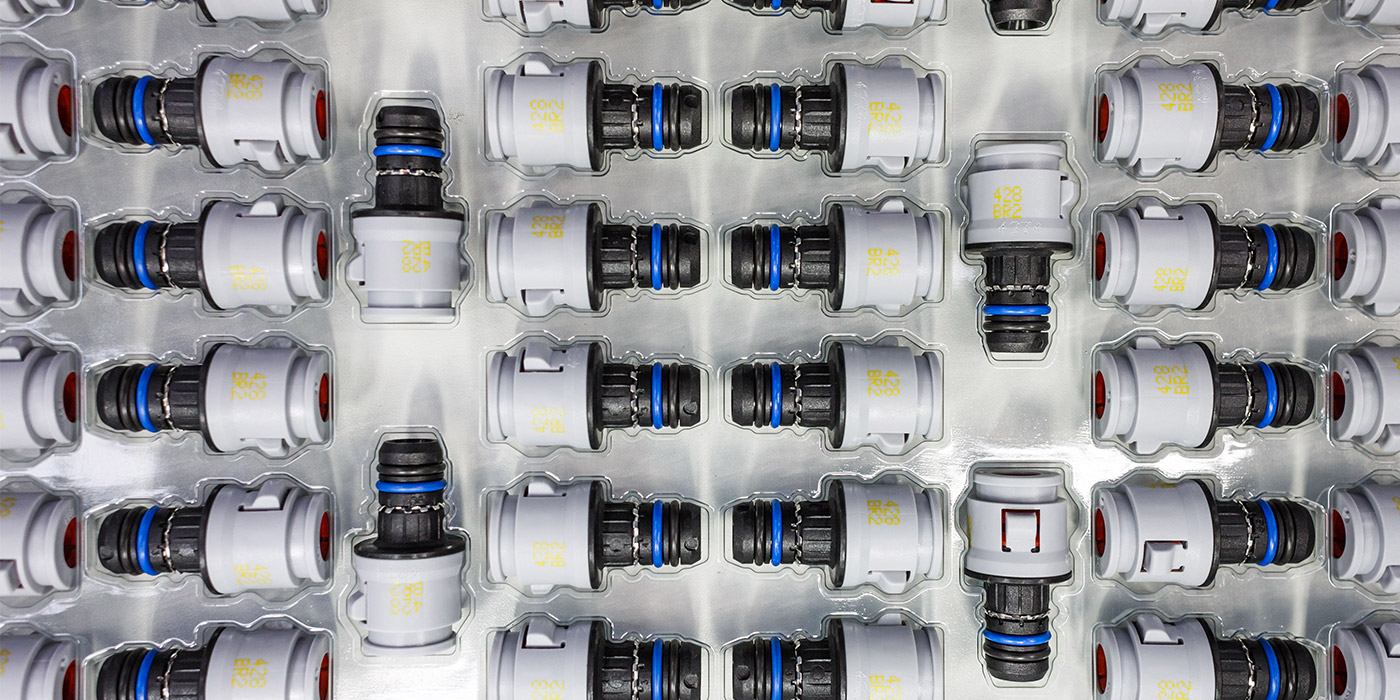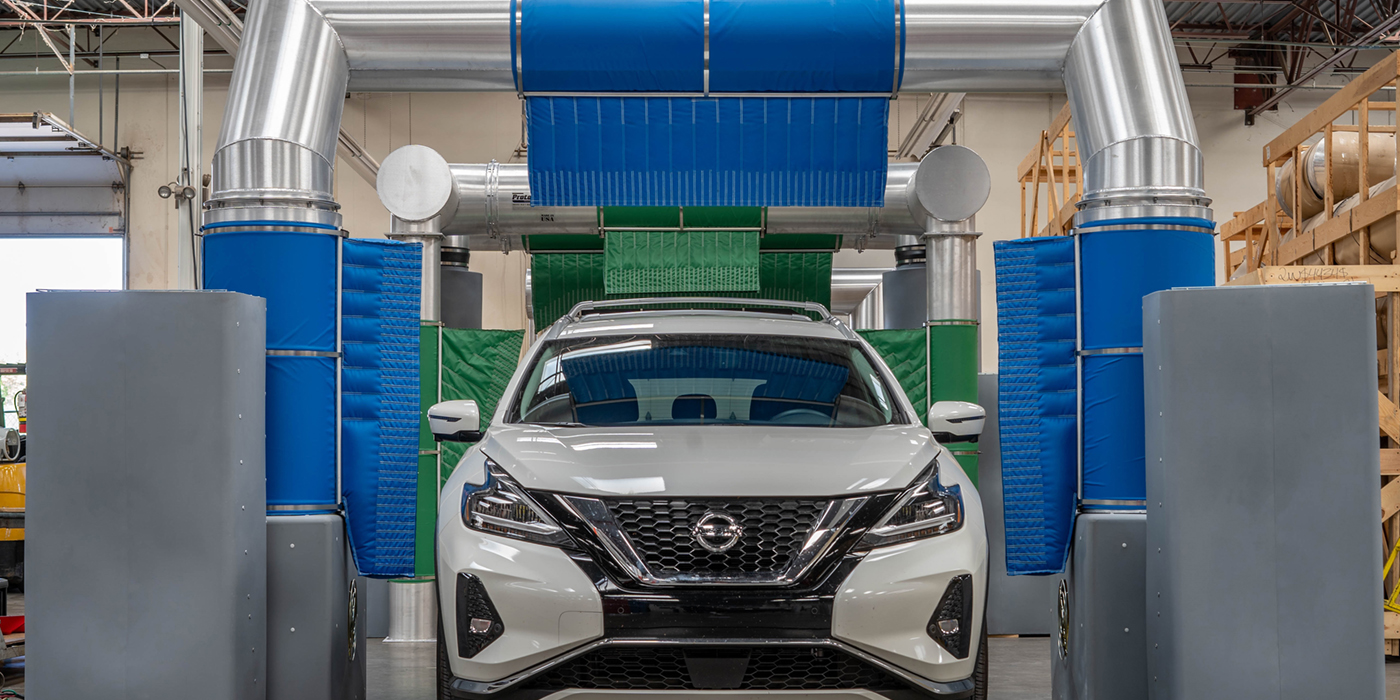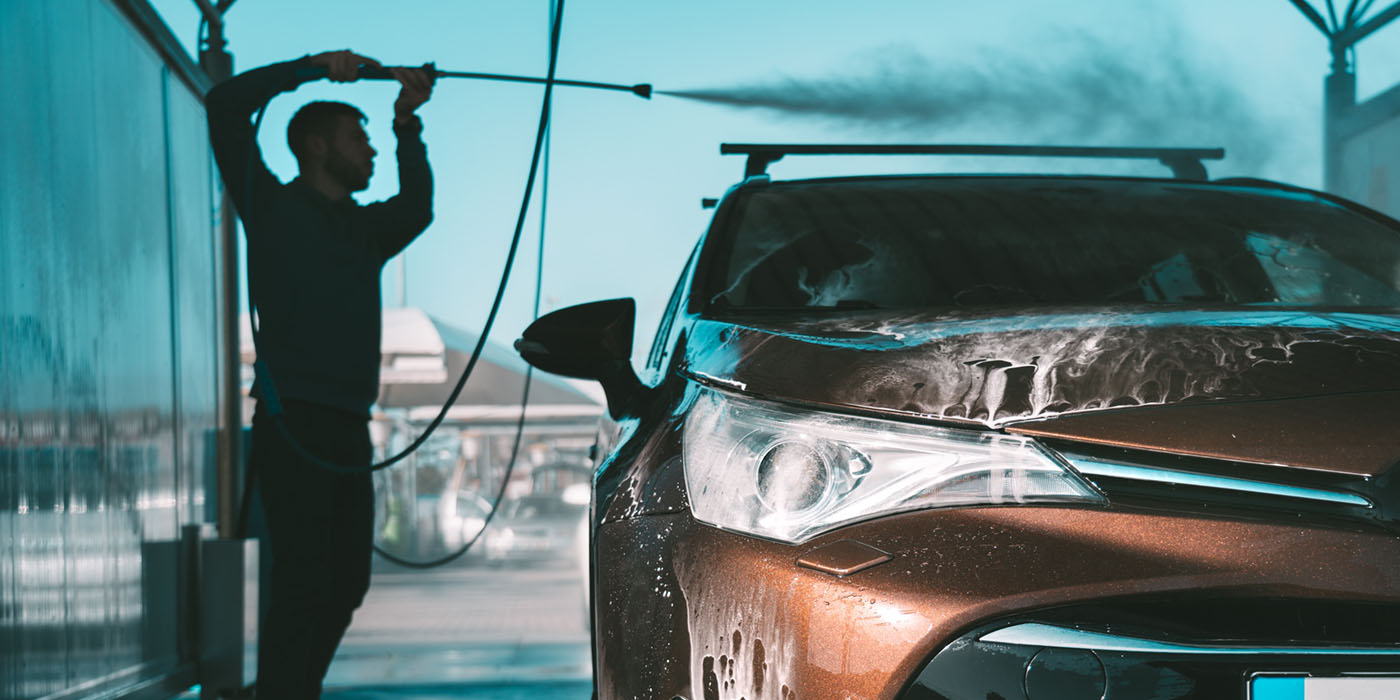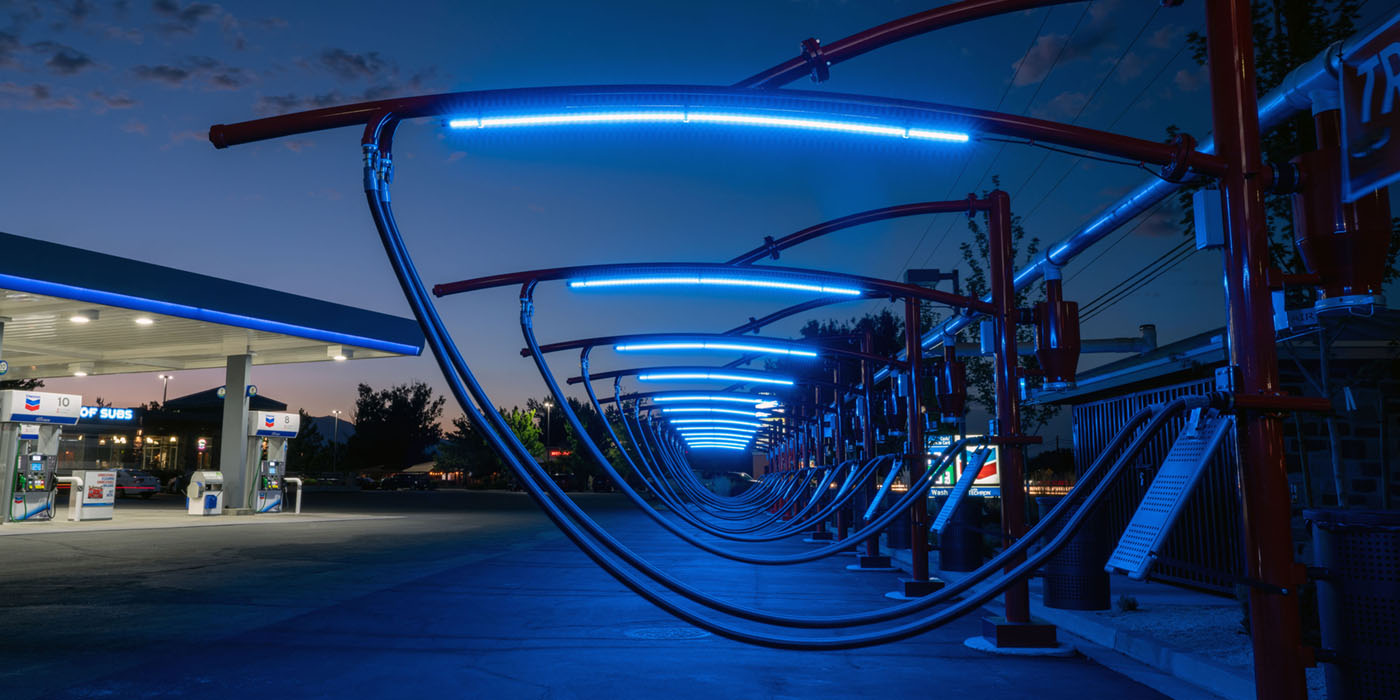From Mr. Roboto to Rosey to the Robot, America’s fascination and interest in robotics over the years cannot be disputed. For many decades, the idea of robots handling regular, everyday human tasks instilled not only a sense of wonderment and what-if but also a bit of concern regarding the future of the American worker. As robotics improved in recent decades, many have worried that one day these machines will eventually outperform their human labor counterparts, making workers expendable. In many industries, including professional carwashing, this day has come.
While average Americans have maintained a healthy interest in the development of robotics over the years — mostly for their convenience and cool attributes — it has been U.S. business owners who have been intensely focused on the potential of robots for very different reasons. And, according to an article posted on CNN.com earlier this year titled “U.S. workers face higher risk of being replaced by robots. Here’s why,” this intense interest to incorporate robots and smart equipment in the workplace is most evident these days in the U.S.
“Thirty-eight percent of the jobs in the U.S. are at high risk of being replaced by robots and artificial intelligence over the next 15 years, according to a new report by PwC,” stated CNN’s article.
According to Chuck Howard, CEO of Autobell Car Wash Inc., this is simply a case of innovation catching up to interest. “In an effort to improve quality, increase efficiency and reduce costs, companies have explored robotics,” he adds, noting that advances in software, sensors and direct activating devices are making robotics more practical and affordable. “The sensors, cameras and other components of self-driving cars will find their way to carwash equipment, bringing down the cost and creating devices that can operate in the carwash environment.”
Programming for the future
While the idea of infusing innovation, robotics and automation into the carwash process is nothing new, what has evolved in recent years has been the potential of robots to replace labor in critical areas of the carwash.
Shortly after CNN’s article was published earlier this year, our own Carwash eNews reported news that highlighted the evolution of robots in carwashing. Titled “New Hoffman Car Wash uses self-developed robotic system,” the release touted the implementation of a robotic system developed by a New York carwash owner and his talented team who were determined to address the sudden rising cost of labor while also enhancing wash results.
“In 2014, [New York’s] Governor Cuomo inspired us when he was pushing his agenda to raise the statewide minimum wage to $15 an hour,” says Tom Hoffman Jr., co-owner of Hoffman Car Wash, which operates several automatic carwashes in the Albany, New York, area. In addition to reducing labor costs, Hoffman also noted that sheer demand, primarily driven through the success of the business’ loyalty program, also intensified his interest to develop robotic equipment.
“In order for us to stay competitive and in business, we would have needed to pass these labor rate increases off to customers; so, instead, we looked at automation and adding more carwash equipment to reduce the number of man hours required to prep a car,” continues Hoffman, who is skilled at writing software code and working with electrical controls.
Initially, Hoffman Car Wash experimented with adapting existing carwash equipment to its conveyor pre-wash area. “As the car approached, we would turn on this robot and blast high pressure, hot, soapy water on the sides of the car. The robot also ‘chased’ and moved across the back of the car,” explains Hoffman. “We were able to reduce the number of man hours to prep the cars [with this robotic system]. Shortly after, we decided to develop our own [robotic] equipment working with a local steel fabricator.”
And, Hoffman is not alone moving forward with robots and increased automation on the frontlines.
Car Trek: the next generation of washing
As mentioned, there are many reasons why robotic equipment is being pushed to the forefront in carwashing today. From increases in labor wages to minimizing human error and damage, there is plenty of motivation for professional carwash owners to perk up when discussing robots’ potential impact on their businesses and bottom lines. Arguably though, the biggest reason owners should get excited today about these machines is because of the improved performance of modern components and systems, which result in better wash results, cost savings and consistency in the final product, just to name a few benefits.
“[Today’s] sonic sensors allow equipment controllers to be able to alter the way equipment washes vehicles automatically, reducing the need for employees to manually adjust the process and eliminating the human-induced errors inherent in that approach,” asserts Dave Ragle, DRB Systems’ product engineer. “By doing so, it enables operators to reduce not only chemical, utility and labor costs, but also equipment and customer damage claims.”
Learning from past challenges, equipment manufacturers are developing equipment — mainly controlled through a vehicle profiling system using sensors — to minimize contact with vehicles in order to reduce damage, maintenance and replacement requirements. These changes have a multitude of advantages for the carwash business while also providing a better level of customer service.
According to Jason Sears, communications manager with Innovative Control Systems (ICS), by automating functions that were previously handled manually, or in some cases not handled at all, operators who choose automation over repeated calibration will experience greater operational efficiency and are able to improve their bottom lines by increasing throughput and decreasing costly damage claims. “They are also providing customers with a better overall experience in the form of consistently cleaner vehicles, and less noise and vibration during the wash process,” he adds.
While the push for automating the carwash process has been an ongoing effort since the industry’s inception over 100 years ago, interest ramped up at the turn of this century as a new carwash model was deployed. Many credit the roots of today’s version of the automated carwash to 2001, which is when the first recognized express exterior carwash surfaced in Louisiana. In order to keep up with demand, manufacturers pushed R&D efforts into newer, more exciting areas.
“Technology across the board has been huge in the advancement of carwashing,” proclaims Robert Andre, vice president of training and education for SONNY’S The CarWash Factory. “What we are able to do with today’s modern carwash controllers is amazing.”
Many operators are finding that today’s controllers can eliminate the employee error factor out of washing cars, says Andre. For instance, some of the more advanced PLC-based controllers can even speed the carwash up to increase volume when needed.
“Also, what we are seeing with pay stations that make it easier for customers to buy a wider range of services without the need for an employee to be involved in the transaction is pretty remarkable,” notes Andre. “Today, operators can use automation to accomplish tasks that only a few years ago had to be done by labor; drying using friction and giving a hand-waxed finish are just two additional examples.”
These smart equipment advancements are occurring across the board, regardless of the carwash format. Modern chemical delivery systems, variable frequency drive (VFD) technology, automated payment kiosks and much more can benefit all carwashes.
In-bay automatic (IBA) carwash machines have become more robotic, notices Howard. “With advances in sensors and controls, many of these machines precisely measure the vehicle and apply the proper amount of wash power,” he adds. “Wheel-cleaning apparatuses have become more robotic for both in-bay automatic and conveyor washes.”
Sears concurs and notes that operators and owners can employ many aspects of automation, including in point-of-sale (POS) areas and chemical dispensing, regardless of the wash format.
System malfunctions
While the advancements of robots and automation cannot be disputed, what is up for debate is the future impact of these machines and an operator’s level of reliability on them as well as an employee’s ability to overcome the challenges associated with using this sophisticated equipment. While no worker is perfect, one thing most healthy employees don’t need is downtime for maintenance.
As supported by Andre’s comments, one of the downsides to using a high level of automation and robotics at your carwash is having more components with the potential to fail and close down the wash. “So, as an operator, you also need to make sure that the people you are hiring also have the ability to maintain and operate this more advanced equipment,” he advises.
In addition to hiring the right tech-savvy people to run your carwash, it is also vital to partner with manufacturers and suppliers that can offer tech support when needed. It’s also not a bad decision to take engineering and maintenance repair classes, offered by some industry manufacturers, to increase your own level of understanding regarding this equipment.
Developing effective automation solutions requires an in-depth understanding of diverse technologies that are integrated into all the different areas of the wash, says Sears. “For that reason, carwash operators should only rely on solutions providers that have experience developing, selling, installing and managing the complex technology that will be woven into their organization.”
Not having a full understanding of the equipment or the solutions required to avoid costly downtime and, worse, vehicle damage, can be an expensive risk for careless operators. The downside of incorporating too much automation in the carwash process, confirms Howard, is that if sensors fail or something goes wrong in the controls, damage to vehicles or personnel might occur. “Or,” he adds, “if too many fail-safes are built in, the idle time or retract time could be frustrating to the operator.”
Further, for optimistic owners dreaming of zero-based labor models in the near future, the experts we interviewed for this article say: “Not so fast.” Besides requiring employees for maintaining and fixing equipment, as well as for greeting and helping customers as needed, today’s robots simply cannot perform some of the tasks still practiced at many carwashes across the country.
“Robots for [cleaning] inside the car could be a long way off, but I wouldn’t say never,” remarks Howard. “The idea behind robots is certainly to reduce some types of labor, but there will still be a need for people to maintain and monitor the robots’ work.”
For full-serve and flex-serve particularly, adds Andre, operators should use labor to their advantage. According to Andre, customers will pay more for someone to clean the inside of their cars as long as consistency, quality and efficiency are built into the service.
During this transition into more automation and robots, Ragle notes that operators will need to balance the desire to reduce and eliminate labor with the desire for certain customers to interact with humans rather than computers. “This may be best served by having a few attended washes that cater to this demographic (while it still exists) as the majority make the move to full automation,” he says.
According to Ragle, our industry is at a critical point. As professional carwash manufacturers continue to expand and produce automated equipment, Ragle has some words of advice for his colleagues in the industry.
“If our industry is to continue to expand and thrive, we must move to an industry-wide standard for interfacing robotic and automated equipment with equipment controllers,” explains Ragle. “Having a situation where one manufacturer’s equipment only works with a specific equipment controller, and another manufacturer’s equipment only functions fully with a different equipment controller, will at best delay and more likely will stagnate the innovation and adoption of robotic and automated equipment required for our industry to move forward.”
Back to the future of carwashing
As the carwash industry rapidly moves ahead in regards to developing automation and robots, many operators may share a sense of wonderment and skepticism regarding the industry’s future as it plays out before them today.
To help provide better clarity, we asked the equipment manufacturers we interviewed for this article to bring us behind the research and development curtain and help us understand what is ahead for the future of carwashing automation and robotics.
At SONNY’S The CarWash Factory, Andre explains that his company is always looking to incorporate as much automation as possible, while still making it long-lasting and easy to maintain. “Advancements we have made and continue to make in the Controls division are really pushing us to new levels. We are using technology to monitor and better gauge the life of wearable items. Another big push for us is to make sure operators know how to use and maintain today’s more advanced equipment.”
As for Ragle at DRB Systems, based on the company’s research and product development, he can foresee a future where fully-automated carwashes will be the norm on the tunnel side of the industry — as far as washing and drying the exterior of the vehicle. Sensors and customer feedback systems, continues Ragle, along with full vehicle profiling and trait detection, combined with the automatic and robotic wash equipment to take advantage of the data gathered for each vehicle, will allow for the elimination of dedicated labor at the wash from entrance to exit.
“However, I think that future is still quite a long way off. In the short-term, [we’re working on] improvements to sensor technology to allow much better data to be gathered about each vehicle as well as the ability to automatically detect more and more items, such as bug guards, trailer hitches, roof racks, rear wipers and other traits that require special handling in the wash process. [We’re also working to create] new and better ways to automate loading vehicles into the wash at the tunnel entrance,” educates Ragle.
Sears’ outlook is one that is most profitable to carwash owners. “Looking ahead,” forecasts Sears, “the revolutionary concept of self-driving vehicles is on the horizon and will open up enormous opportunities for forward-thinking operators. Envision the carwash of tomorrow capitalizing on this new automotive era by actively scheduling washes around the clock for self-driving vehicles. Do you have unused capacity at your wash at 3:00 a.m.? The carwash of tomorrow will be able to broadcast a discounted offer to all self-driving vehicles in the area to fill that void. Self-driving vehicles will be programmed to monitor the after-hours offers presented by automated carwashes, select the best option based on a preprogrammed set of criteria, travel to the location autonomously, execute the wash and return home — all while its owner and the forward-thinking carwash operator are sleeping. Sounds futuristic, but 100 years ago, robots and automated carwashes did too.”
Back at Hoffman Car Wash, Hoffman has plenty of reasons to forge ahead with developing and incorporating robots into the wash process at his locations. In addition to reducing labor costs, the carwash is also noticing better wash results, more efficient process times, fewer bottlenecks, enhanced customer experiences and more consistent washes.
“The robots we’re building maintain triple the contact time on the front end and, using a grill brush spinning in the opposite direction than a wrap-around, we’re able to make contact with the vehicle for 10 feet of travel, which is really unheard of using a typical wrap-around. This helps to effectively clean insects, for example, off the front end of cars. The grill brush feature of that robot also cleans down the side of the car and can also clean the back of the car,” educates Hoffman, adding that this robot is designed to clean as many as 200 cars per hour.
Similar to many other industries, some carwash owners and operators will simply resist change and elect not to upgrade their existing equipment. Hoffman offers some wisdom to complacent operators who plan to just keep it simple.
“Keeping it simple today means you wash fewer cars, you have higher labor costs, you’re not as productive and you’re not as convenient for your customers,” he concludes. In other words, it is recommended that you change with the times for a rosier future.

